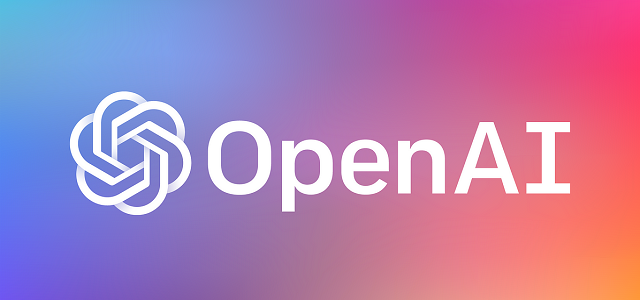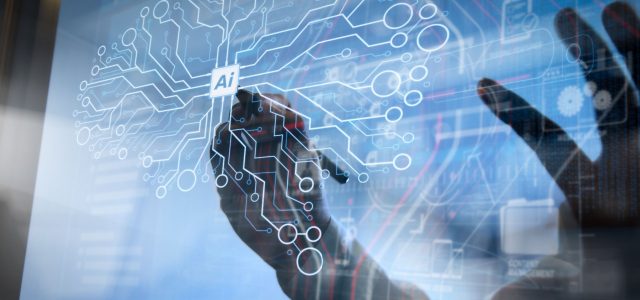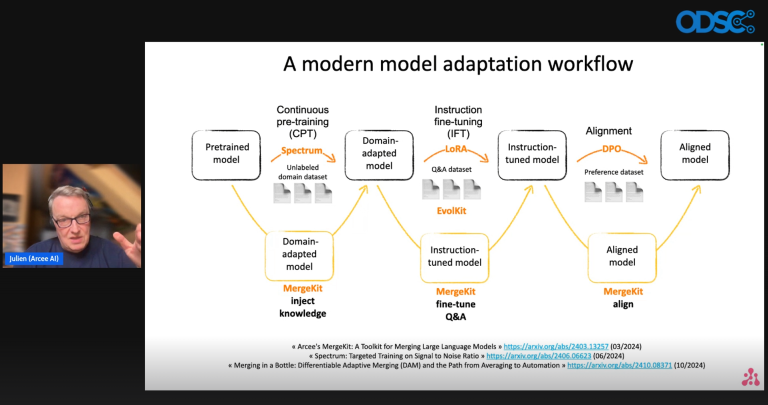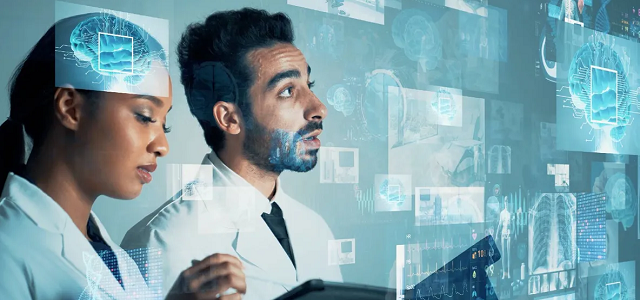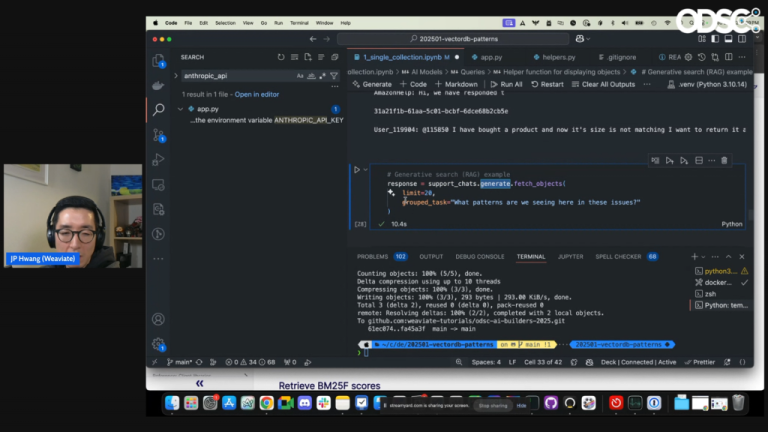Transforming Tomorrow: The Impact of OpenAI on 6 Key Industries
The previous year has witnessed a remarkable surge in the appeal, application, effectiveness, and cultural value of AI tools. A prime illustration of this trend is the launch of ChatGPT by OpenAI, which remarkably attracted over 1 million users in just five days. Within a month, this figure skyrocketed to exceed 100 million active users, surpassing the popularity of any prior AI tool.
Beyond simply admiring the capabilities of the technology itself, numerous professionals are leveraging OpenAI’s innovations to enhance their respective industries. Organizations globally are beginning to weave AI into their operational routines, harnessing this technology to boost efficiency and automate various tasks.
In this article, we will explore the integration of OpenAI within six fundamental sectors, examining how each of these fields is being transformed by artificial intelligence. Let’s jump right in.
1. Education and Learning
Throughout the pandemic, students worldwide transitioned to online platforms to continue their education. Initially controversial, these virtual classrooms quickly became embraced. The emergence of educational technology and online learning spaces has thrust this sector into a more advanced technological era.
This wave of innovation created an optimal environment for OpenAI’s entry into education. OpenAI has been integrated into online learning platforms to enhance educational experiences for students. The artificial intelligence analyzes student interactions, tracking behaviors on the learning platform and providing tailored suggestions for improvement.
By employing Natural Language Processing (NLP), OpenAI is capable of generating personalized learning materials for individual students, facilitating diverse learning styles and paces. Initial trials of OpenAI in education were carried out at prestigious institutions such as Stanford and Harvard, yielding highly positive outcomes.
Given that education is one of the most crucial sectors globally, the prospect of enriching it through artificial intelligence stands as an exciting development. Projections indicate that OpenAI may become a cornerstone of learning worldwide.
2. B2B Sales
The trend of personalized marketing has swiftly emerged as a leading strategy in B2B sales over recent years. This approach not only results in higher conversion rates and increased profits but also enhances customer satisfaction. However, creating personalized content is time-consuming. Even though audience segmentation is possible, there are limits to how nuanced this can be before exerting excessive strain on resources.
To tackle this challenge, B2B sales platforms are providing businesses with advanced tools to better connect with their customers and streamline operations. The arrival of OpenAI has prompted many top SaaS solutions in the industry to further enhance their offerings.
One such example is Walnut, a platform that has gained traction in recent years by providing B2B sales teams with improved methods for delivering personalized product demonstrations. Recently, they unveiled Walnut Ace, an advanced version of their software integrated with OpenAI.
The fusion of a product demo suite with AI capabilities allows sales representatives to script demo presentations in mere seconds and address product-related queries efficiently. This system dramatically boosts the number of product presentations that businesses can deliver, significantly accelerating the sales process.
For business service firms aiming to enhance their outreach and attract more clients, innovative collaborations between OpenAI and leading B2B platforms like Walnut appear to be an essential next step.
3. Manufacturing and Automation
Historically, the manufacturing sector has evolved through significant technological advancements. The industrial revolution is a clear example of how mechanical innovations revolutionized work. As we transition into an AI-driven era, it is evident that the manufacturing industry is entering a new phase of technological automation.
OpenAI is making waves in manufacturing by facilitating automation across various systems. In instances involving monotonous tasks like data entry, AI can step in, saving companies both time and money. At the more complex end, OpenAI’s technology is being harnessed to create robots capable of interacting with their environment.
These robots can be trained for specific roles, potentially reducing the human workforce needed in specific operations. As this technology advances, the spectrum of roles these robots can fulfill continues to expand. It appears this sector could truly be transformed entirely by OpenAI.
Given that industrial automation has repeatedly evolved, it’s becoming clear that artificial intelligence is poised to be the next phase of this evolution.
4. Finance and Financial Systems
The financial services sector is characterized by vast amounts of data, various online platforms, and systems that are constantly updating. Even significant entities like the international stock exchange rely meticulously on data analysis. Given that financial services have long been associated with automation, it makes sense to explore how these advancements can further benefit the field.
Currently, OpenAI is utilized in finance to alleviate the burdens of monotonous tasks. From completing data entries to assisting clients, it streamlines these operations, freeing up valuable time for critical decision-making. Additionally, it assists with more intricate financial functions, including portfolio management and the development of business strategies.
On the customer-facing side of finance, OpenAI is being employed to enhance onboarding processes and streamline application handling. With the dynamic nature of financial services, there is an ongoing influx of new clients and related paperwork.
In these scenarios, OpenAI can expedite processes, increasing the efficiency of vital operations and minimizing errors. Since human errors frequently plague financial systems, the robustness of OpenAI enables firms to maintain higher accuracy levels regarding their documentation.
The arrival of sophisticated Natural Language Processing within OpenAI can guide businesses toward smarter financial decisions.
5. Retail
The retail sector may initially seem overly human-centric for the integration of AI tools. However, while direct customer interaction remains vital, the behind-the-scenes operations are rapidly transitioning into a digital landscape.
Similar to other industries, OpenAI can manage tedious paperwork that typically occurs behind the scenes in retail. This will significantly cut down the time required to complete these chores, allowing employees to focus more on customer engagement rather than administrative tasks. Furthermore, inventory management can be automated, liberating managers from these duties.
OpenAI has shown potential in aiding customer data collection as well. Leveraging AI-enabled cameras, it can analyze customer demographics by scanning facial features to estimate age and gender, providing insights that can enhance personalized engagement strategies.
While still in its developmental phases, OpenAI is also set to deepen our understanding of human emotions. By utilizing the aforementioned camera technology, retail staff can gain real-time insights into customers’ emotional responses based on subtle body language changes. This intelligence can significantly improve product recommendations and strengthen customer relationships.
6. Healthcare
Lastly, the implementation of AI technology in healthcare is poised to redefine patient care and operational efficiency. OpenAI’s capabilities are being explored to enhance diagnostics, streamline administrative workloads, and potentially even assist in treatment strategies.
By employing AI to analyze vast amounts of medical data, healthcare professionals can make more informed decisions. Moreover, automating routine tasks allows healthcare workers to dedicate more time to direct patient interaction, which is crucial for quality care. The integration of OpenAI could pave the way for significant advancements in healthcare practices, ultimately improving patient outcomes and operational effectiveness.
Technology is making significant strides in the healthcare sector. By leveraging a combination of artificial intelligence (AI) and advanced deep learning algorithms, OpenAI is creating a comprehensive repository of medical images. This extensive database allows OpenAI to analyze images of patient injuries against its records, enabling the identification of potential health concerns by generating baseline insights into a patient’s condition.
When patients visit their doctors, the healthcare professionals are armed with much more detailed information, streamlining the diagnostic process. Moreover, by offering this technology through medical applications, OpenAI empowers individuals to learn about their injuries and health issues from the comfort of their homes. This innovative approach holds the promise of significantly alleviating the burden on healthcare systems worldwide.
Final Thoughts
The AI market is projected to soar to nearly $200 billion by 2025, with an impressive annual growth rate of 36.62%. Such explosive growth doesn’t occur spontaneously; it is the result of continuous advancements in the field that have emerged over the past few years. This latest surge in innovation appears to be just the beginning of what lies ahead.
OpenAI is carving a path that expands across diverse sectors, from business services to healthcare. The breadth of industries being influenced by this technology highlights its power and potential. If this momentum continues, we can anticipate even more groundbreaking developments in the near future.
The past year has marked a remarkable surge in the adoption, functionality, and cultural significance of AI tools. A prime example is the launch of ChatGPT by OpenAI, which amassed over 1 million users within just five days. A month later, that figure skyrocketed to over 100 million active users, surpassing any previously utilized AI tool.
Beyond marveling at the sophistication of these tools, many are now leveraging OpenAI’s innovations to transform their respective industries. Businesses globally are starting to integrate AI into their everyday operations, harnessing this technology to enhance efficiency and automate numerous tasks.
In this article, we will explore OpenAI’s impact across six key industries, examining how each sector is being reshaped by the power of artificial intelligence. Let’s jump in!
1. Education and Learning
During the pandemic, students around the world migrated to online platforms to continue their education. Initially contentious, these virtual settings quickly gained acceptance. The surge in educational technology and remote learning has propelled this industry into a more digital-forward era.
This rapid transformation has paved the way for OpenAI’s entry into the education sector, where it has been integrated into online learning platforms to enhance learning experiences. OpenAI’s AI analyzes student interactions with these platforms, offering tailored suggestions for improvement.
Employing natural language processing (NLP), OpenAI also crafts personalized educational content for learners, catering to individual learning styles and paces. Initial trials conducted at prestigious institutions like Stanford and Harvard have yielded promising results, indicating a bright future for AI in education.
Given the critical importance of education globally, the infusion of artificial intelligence into this field is incredibly exciting. Current projections suggest that OpenAI could become a fundamental component of learning across the world.
2. B2B Sales
In recent years, personalized marketing has emerged as a dominant strategy in B2B sales, known for boosting conversion rates, profits, and customer satisfaction. However, crafting tailored content can be time-consuming, creating resource strain when segmenting audiences too finely.
To tackle this challenge, B2B sales platforms are enhancing their offerings to facilitate smoother customer interactions and operational efficiency. With OpenAI’s advent, leading SaaS solutions are eager to elevate their products further. For instance, Walnut has successfully delivered personalized product demos for B2B sales teams and has now introduced Walnut Ace – an enhanced version of its software powered by OpenAI.
This innovative blend of product demonstration tools and AI capabilities allows business teams to generate demo scripts in seconds and respond to product inquiries swiftly. This efficiency empowers businesses to offer more demos, significantly accelerating their sales processes.
As business services seek to enhance outreach and attract new customers, the integration of OpenAI with platforms like Walnut represents a promising next step.
3. Manufacturing and Automation
Historically, the manufacturing industry has evolved through technological advancements, notably during the industrial revolution, where mechanical innovations transformed the labor landscape. As we enter an AI-driven era, manufacturing is on the brink of a new wave of technological automation.
OpenAI technology is increasingly utilized in manufacturing to automate processes worldwide. Routine tasks, such as data entry, can now be effectively managed by AI, resulting in cost savings for businesses. Moreover, AI is being harnessed to develop robots capable of engaging with their environments.
These robots can be specifically trained for various roles, reducing the need for human labor in certain operations. As this technology advances, the range of tasks that robots can undertake continues to expand. In this context, the future of manufacturing is poised to be significantly shaped by OpenAI.
4. Finance and Financial Systems
The financial services sector is characterized by vast amounts of data and continuously evolving online platforms. Even something as influential as the stock market is fundamentally data-driven. Automation is a primary consideration in finance, as much of the industry’s work relies on technology and algorithms.
Currently, OpenAI is deployed in finance to streamline mundane tasks such as data entry and customer interfacing, which alleviates workload pressures and frees up time for more critical activities. It is also utilized for intricate financial functions like portfolio management and developing ongoing business strategies.
On the client-facing side, OpenAI supports customer onboarding and application processing, addressing the persistent influx of new customers and paperwork in the finance sector. By automating these processes, OpenAI enhances speed and efficiency, substantially minimizing the likelihood of human error.
With organizational finance being so vital to our daily lives, OpenAI’s capabilities can significantly bolster accuracy and efficiency across financial systems.
The Role of OpenAI in Business Innovation
OpenAI is showcasing a transformative level of technology that can assist companies in making more informed financial choices.
5. Retail
The retail sector might initially seem too dependent on human interaction for the integration of AI tools. Nevertheless, while face-to-face purchasing remains vibrant, the operational aspects of the retail industry are swiftly entering the digital era.
Just like in other sectors, OpenAI can handle tedious paperwork tasks in retail, drastically reducing completion time. This not only frees up employees to concentrate more on customer engagement but also minimizes their time spent managing administrative tasks. Furthermore, inventory management can be automated, allowing managers to streamline their responsibilities efficiently.
OpenAI also enhances customer data collection methods. By utilizing AI-driven cameras, this technology can analyze faces and compile demographic information about customers. While the accuracy may vary, it provides valuable insights into age and gender, enabling staff to tailor their approach for a more personalized service.
Additionally, OpenAI is on the cutting edge of recognizing human emotions. Using the aforementioned camera technology, it can deliver real-time insights into customers’ body language, helping staff respond more effectively during interactions. This capability will significantly improve the process of recommending products and establishing a connection with clients.
6. Healthcare
Moreover, the advanced camera technology mentioned previously finds applications in the healthcare sector. Combining AI with deep learning algorithms, OpenAI is creating a vast collection of medical images. By cross-referencing patient scans with this extensive database, it can provide preliminary insights into potential health issues.
This ensures that when patients visit their doctors, physicians will be equipped with comprehensive information, expediting the diagnostic process. Furthermore, by offering medical apps powered by this technology, OpenAI empowers users to gain insights about their health issues without leaving home, potentially alleviating pressure on healthcare systems globally.
Final Thoughts
It’s no surprise that the AI market is expected to approach a staggering $200 billion by 2025. With an impressive annual growth rate of 36.62%, the advancements in this sector have been significant over the years. The current wave of progress indicates that we are only scratching the surface of what’s possible.
OpenAI’s influence spans various fields, from business operations to healthcare, illustrating the extensive reach and potential of this technology. If the pace of innovation continues as it currently is, we can anticipate even more groundbreaking developments in the near future.
